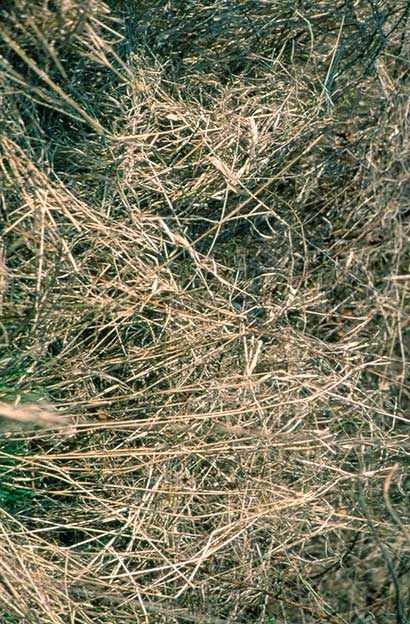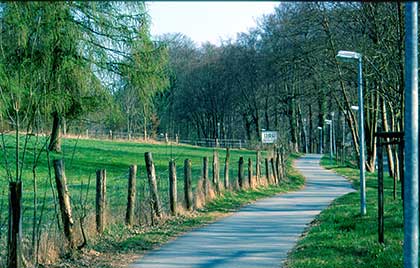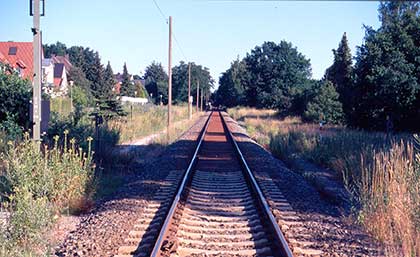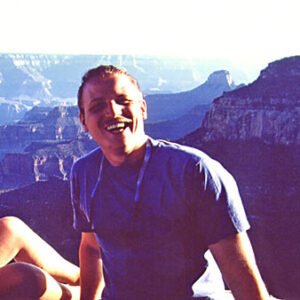You are here: Nature Science Photography – Image creation, Depth and Size – Space perception
The retinal image projects according to the laws of central perspective, yet our final perception undergoes numerous corrections. Therefore, what we are left with to infer the extent of space are converging parallel horizontals and the texture gradient. The railroad tracks running towards the horizon are an example for the first case. Why doesn’t this feature apply to vertical objects? The eye builds up the overall picture of our environment from many individual images by jumping from one prominent point to another. It is forced to do this because the area of sharp vision that we consciously perceive only makes up about 5° of our field of vision. Objects that, because of their size, can only be perceived by joining several of these „individual images“ are corrected in this way because, under these conditions, the brain assumes a straight line as the simplest and most stable construction. Furthermore, perception takes into account the sense of balance and gravity, so we only perceive converging vertical parallels on buildings when we look at them from a very steep angle. However, an object such as a railroad track running straight ahead can suddenly fit into this focus and is not affected by gravity. Consequently, the visual system bases its hypothesis here solely on the retinal image formed according to linear perspective, and we perceive such horizontal parallels as converging according to the rules of perspective. The texture gradient serves us as a clue to spatial depth because we assume that things that look the same are also identical in size. Decreasing distances between such identical objects or their reduced image with increasing distance, like the cobblestones of a street appearing more and more densely packed with increasing distance or the long row of identical telegraph poles moving closer together, runs counter to this and is explained by the conclusion of an existing extension into depth (figure 34, texture gradient 2). However, it is important to note that the texture gradient only contributes to depth perception when we are able to recognize the objects in front of us. Figure 33 (texture gradient 1) shows how this is meant. We cannot recognize the subject, a grassy area, in the photo as it is shown, and therefore the impression of spatial depth does not arise. But if you rotate it 90° counterclockwise, you will immediately see what is meant and also perceive the depth.



Main Image creation, Depth and Size
Previous Relative size
If you found this post useful and want to support the continuation of my writing without intrusive advertising, please consider supporting. Your assistance goes towards helping make the content on this website even better. If you’d like to make a one-time ‘tip’ and buy me a coffee, I have a Ko-Fi page. Your support means a lot. Thank you!


 Since I started my first website in the year 2000, I’ve written and published ten books in the German language about photographing the amazing natural wonders of the American West, the details of our visual perception and its photography-related counterparts, and tried to shed some light on the immaterial concepts of quantum and chaos. Now all this material becomes freely accessible on this dedicated English website. I hope many of you find answers and inspiration there. My books are on
Since I started my first website in the year 2000, I’ve written and published ten books in the German language about photographing the amazing natural wonders of the American West, the details of our visual perception and its photography-related counterparts, and tried to shed some light on the immaterial concepts of quantum and chaos. Now all this material becomes freely accessible on this dedicated English website. I hope many of you find answers and inspiration there. My books are on